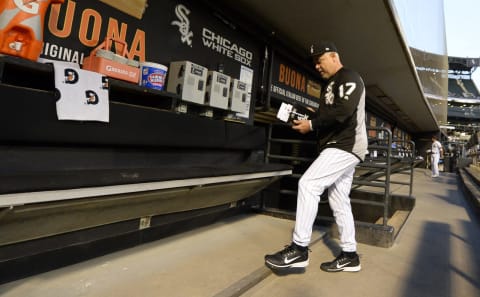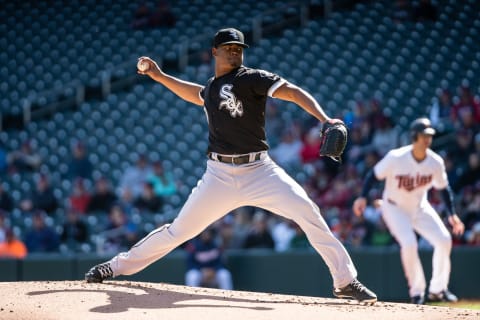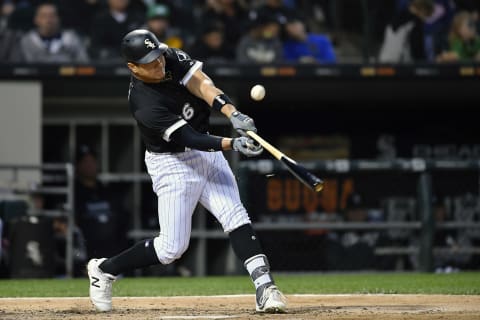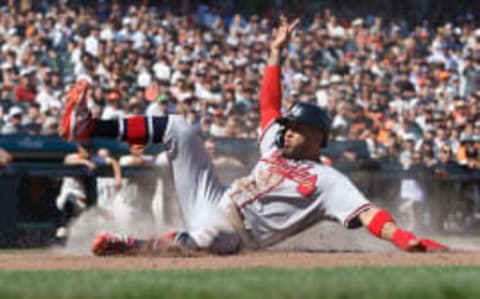Chicago White Sox 2018 season review


After the fourth 100-loss season in franchise history, the Chicago White Sox hope their highly-regarded farm system is ready to shine.
With eight losses in their final nine games, the 2018 Chicago White Sox accomplished something no White Sox team had done since 1970. Unfortunately, it was not a positive accomplishment. They were the first White Sox team to lose 100 games in a season since that 1970 squad that was led by 36-year-old Luis Aparacio and 27-year-old Tommy John before John had the now ubiquitous surgery that is named after him.
At 56-106, the 1970 White Sox had the most losses in franchise history. The 2018 team finished 62-100, which landed them with the fourth-most losses ever for a White Sox team. It also extended their playoff drought to 10 seasons. They’ve finished over .500 just twice during that time.
Heading into the season, the White Sox weren’t expected to be contenders, but there was hope that their mix of youth and veterans would be enough to make them better than the year before. After going 67-95 in 2017, the White Sox were expected to win around 70 games.
Their season started well with two wins in March, but a 6-18 record in April and 8-19 record in May dropped them to 16-37 heading into June. Their .302 winning percentage was the worst in baseball, even worse than the terrible Baltimore Orioles.
Just when you thought it was hopeless, the White Sox turned things around in June, July and August by going 38-44, a .463 winning percentage for 82 games, which is slightly more than a half a season. This kind of improvement is what fans like to see out of a team going through a rebuild. Perhaps it was a sign that the young players were getting better and the team was ready to take a leap forward in 2019?
Perhaps not. The White Sox went 8-19 in September, which included losing 11 of their final 14 games. After a hopeful 82-game stretch, the team went back to playing as poorly as they had in May. They finished the season with the third-worst record in baseball.
Even in a bad season, there were good things that happened. Let’s take a look at the positives for the 2018 Chicago White Sox.

2018 White Sox: What went right?
One of the few positives this year was Omar Narvaez, who was the backup catcher to start the season but ended up playing 97 games and getting 322 plate appearances because starter Welington Castillo served an 80-game PED suspension, then was put on the DL immediately after the suspension ended. Narvaez led all regular players with a 122 wRC+, meaning he was 22 percent better than average on offense after league and ballpark effects were considered.
The main driver of Narvaez’ offensive production was a team-leading .366 on-base percentage (for players with at least 50 PA). He also hit for more power than he had in his first two years in the big leagues, finishing with a .429 slugging percentage. Welington Castillo will likely be the number one catcher in 2019, but at least the White Sox know they have a solid backup in place.
Other than Narvaez, only two White Sox position players finished with 2 Wins Above Replacement, which is essentially league average production. The middle infield tandem of Yoan Moncada and Tim Anderson each finished with exactly 2 WAR (per Fangraphs).
Moncada hasn’t busted out like fans hoped he would after being acquired in the Chris Sale trade, but he’s still young enough to make a big leap forward in the near future. Anderson’s value was largely based on his defense. He still struggles mightily to get on base (.281 OBP).
It should be mentioned that Daniel Palka hit 27 home runs and Matt Davidson hit 20, but both struggled so much on defense that they were below average player. The power is a positive, the defense a negative. At least Davidson did well in double-duty. He had three scoreless outings from the pitcher’s mound and the White Sox have told him to work on his pitching over the offseason.
The Chicago White Sox pitching was mostly a dumpster fire this season, but Reynaldo Lopez was a sliver of sunshine with potential rain clouds looming. On the surface, Lopez looked much improved from his two partial seasons in 2016 and 2017. He had a 3.91 ERA and 1.27 WHIP. A closer look reveals a 4.63 FIP, which isn’t much better than the 4.75 FIP he had the previous season. Lopez makes the “positives” list for his 3.91 ERA, but that FIP suggests caution should be exercised when thinking about his future.
As you’d expect from a 100-loss team, there were more negatives than positives. Here are a few of the problems the White Sox experienced in 2018.

2018 White Sox: What went wrong?
One of the brightest spots for the 2017 White Sox was one of the biggest negatives for the 2018 squad. Avisail Garcia interrupted a career of replacement-level mediocrity with an impressive season in 2017 in which he hit .330/.380/.506 and was worth 4.2 WAR. It was the only good season he’s had in the major leagues and it’s so far out of line with the rest of his career that you can’t expect him to ever repeat it.
One of the biggest differences between Garcia in 2017 and every other full season he’s played was his .392 Batting Average on Balls In Play (BABIP) that year. The year before, his BABIP was .309. This year, his BABIP was .271. If his hit total was reduced enough in 2017 to drop his BABIP from .392 to .271, his final batting line would look very similar to this year’s mark. Much of that 2017 season was BABIP-fueled.
Another big negative among position players was Nicky Delmonico. The 25-year-old outfielder went from hitting .262/.373/.482 and being worth 1.1 WAR in 43 games in 2017 to hitting .215/.296/.373 and being worth -0.3 WAR in 88 games this year. His walk rate went down, his strikeout rate went up, and he was worse at base running and defense. Being worse at everything is a recipe for disaster.
Then there’s young starting pitcher Lucas Giolito, who had a superficially-impressive 2.38 ERA in seven starts in 2017. This year, except for one month, Giolito was a disaster. His one good month was August, when he started six games and had a 3.86 ERA and 1.02 WHIP. The rest of the season, he had a 6.75 ERA and 1.60 WHIP. He led the league in walks allowed and earned runs allowed.
Other negatives from the pitching staff included Hector Santiago and James Shields, who is now on a four-year run of bad seasons. Carlos Rondon had a 4.95 FIP and a strikeout rate that was 8 percent worse than last year. Carson Fulmer only pitched 32.3 innings, but he packed a lot of bad pitching into those 32.3 innings (eight home runs allowed, an 8.07 ERA, 7.27 FIP, and 14.6 percent walk rate).
On the injury front, one of the White Sox top prospects, Michael Kopech, had Tommy John surgery and is not expected to pitch in 2019. Kopech came to the White Sox with Yoan Moncada in the Chris Sale trade with the Red Sox. He started four games for the White Sox this season and struck out 15 batters in 14.3 innings while averaging over 95 mph on his fastball. Losing him to Tommy John surgery was a big setback to the immediate future of the franchise.
Another injury during the 2018 season was a gut punch to the team. Pitcher Danny Farquhar nearly died from a brain aneurysm in the dugout after pitching in a game on April 20. Six months after the incident, Farquhar threw out the first pitch at a White Sox game. He’s expected to make a full recovery.

White Sox: Outlook for 2019
Only the Tampa Bay Rays have a lower estimated payroll for 2019 than the Chicago White Sox. The most-expensive White Sox player will be first baseman Jose Abreu, who made $13 million last year and has one year of arbitration to go before free agency. He’s projected to make around $16 million in 2019. James Shields has a club option for $16 million, but that’s as likely to be picked up by the White Sox as I am to win the MegaMillions jackpot on Tuesday.
Live Feed class=inline-text id=inline-text-3
House That Hank Built
Catcher Welington Castillo ($7.25 million) and shortstop Tim Anderson ($1.4 million) have guaranteed contracts and reliever Nate Jones has an option for $4.625 million that the White Sox could pick up. The rest of the team is arbitration-eligible or pre-arbitration. As things are now, the lineup, rotation and bullpen look like this:
C—Welington Castillo/Omar Narvaez
1B—Jose Abreu
2B—Yoan Moncada
SS—Tim Anderson
3B—Yolmer Sanchez
LF—Nicky Delmonico/Ryan LaMarre
CF—Adam Engel
RF—Avisail Garcia
DH—Daniel Palka/Matt Davidson
SP—Carlos Rodon
SP—Reynaldo Lopez
SP—Lucas Giolito
SP—Dylan Covey
SP—Carson Fulmer
CL—Jace Fry
RP—Juan Minaya
RP—Ian Hamilton
RP—Caleb Frare
RP—Rob Scahill
While the above lineup and rotation aren’t likely to make the Cleveland Indians worry about the AL Central just yet, the White Sox have one of the best farm systems in baseball. They were ranked third by MLB Pipeline before the season and maintained that #3 ranking in their August update.
The White Sox have seven prospects ranked in the top-100, including outfielder Eloy Jimenez (#3), outfielder Luis Robert (#25), 2B/SS Nick Madrigal (#32), and pitchers Dylan Cease (#44) and Dane Dunning (#64). Michael Kopech was ranked 13th before it was known that he would need Tommy John surgery.
Jimenez is the gem of the system. At 21-years-old, he hit a combined .337/.384/.577 across Double-A and Triple-A last year. He could be ready for major league playing time as soon as this year. In fact, some fans were upset that he didn’t get the call to the big leagues this season, but teams like to manipulate the service time of their top prospects these days.
dark. Next. Davidson looking to become two-way player
The Chicago White Sox won’t compete with the Indians this season, but they have a brighter immediate future than the Royals or Tigers and should move up quickly on the Twins. They have a good farm system and not much money committed to the future. It’s probably too soon to make a big splash in the free agent market, but as the young players develop and the minor leaguers get their call to the big leagues, the White Sox should become relevant again in the next few years.